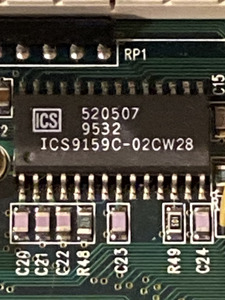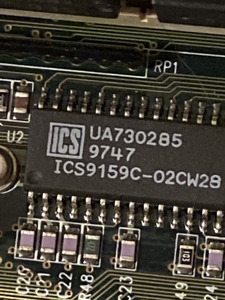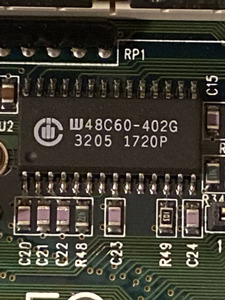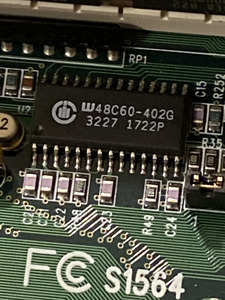Not immediately taken with the idea to be honest. It feels like it'd quickly turn in to something way more messy then the 'change the crystal and add 2 oscillators' option. Any clock gen chip with roughly the right number and frequency of outputs is going to be about the same size, so an interposer board will end up being bigger than the pads it needs to solder on to, and there are components surrounding that area, so it'd have to stand up on wire legs. Soldering it in place would then become interesting. Maybe a small socket could be glued within the SOIC footprint, with surface wires running to the SOIC pads, which an interposer could then attach on to (overhanging other components), but running fast clock signals through connectors isn't going to help the clock waveform.
The drive for the main crystal would have to go through a couple of vias and a connector, when there are usually strict rules about not doing that to guarantee that the crystal will start to oscillate. So the interposer would probably need to have its own crystal. Clock generators need a fair bit (200mA?) from a stable supply, so it'd also need decoupling capacitors and supply filters (not a major issue, depending on the current capabilities of any connector).
There's also the problem of finding suitable generator chips. I had a quick look on Mouser and can't immediately find anything that'd work (5V tolerant is a problem, which can be fixed with buffers, but that's adding more complications). So that still means having to find a supply of old chips with the right frequency outputs. Taking one-off chips from broken boards won't really work because any interposer will have been designed around a particular chip, and then we're back to the problem of finding broken boards with compatible chips.
It just feels like the amount of work to end up with something that has worse output quality, so less likely to work, than swapping the existing crystal isn't worth it. Swap the main crystal, lift a couple of pins, move a resistor and add a couple of self-contained 5x7mm oscillator chips for the 14.318MHz reference and the 24MHz chipset clocks. Not as neat as being able to just change the chip, but it does mean you can then easily change the CPU/BUS frequency just by changing the crystal, rather than being limited by jumpers. It has been done before, so it's not a complete unknown (from a link majestyk found, in a slightly odd way involving sawing out sections from a dead donor motherboard): http://web.archive.org/web/20070808045424/htt … n/busclock.html
That, plus clocks worry me. Probably the most analog bit of the whole system. Except maybe the sound card output.




